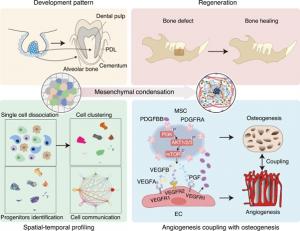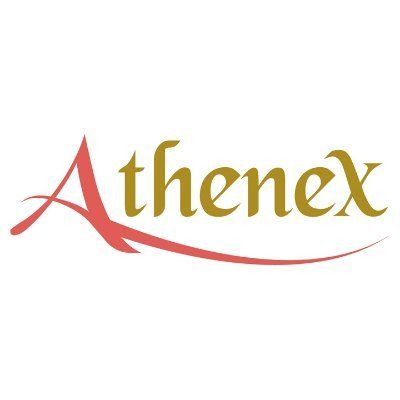Request Demo
Last update 09 Sep 2025

People's Liberation Army Air Force Military Medical University
Last update 09 Sep 2025
Overview
Tags
Neoplasms
Nervous System Diseases
Other Diseases
Small molecule drug
Monoclonal antibody
Recombinant polypeptide
Disease domain score
A glimpse into the focused therapeutic areas
No Data
Technology Platform
Most used technologies in drug development
No Data
Targets
Most frequently developed targets
No Data
| Top 5 Drug Type | Count |
|---|---|
| Small molecule drug | 20 |
| Monoclonal antibody | 8 |
| Recombinant polypeptide | 3 |
| Antibody drug conjugate (ADC) | 2 |
| Exosomes | 2 |
Related
53
Drugs associated with People's Liberation Army Air Force Military Medical UniversityTarget |
Mechanism SRC inhibitors [+1] |
Active Org. |
Originator Org. |
Active Indication |
Inactive Indication |
Drug Highest PhaseApproved |
First Approval Ctry. / Loc. United States |
First Approval Date14 Dec 2020 |
Target |
Mechanism HDAC inhibitors [+1] |
Active Org. |
Originator Org. |
Active Indication |
Inactive Indication |
Drug Highest PhaseApproved |
First Approval Ctry. / Loc. China |
First Approval Date23 Dec 2014 |
Target |
Mechanism BSG inhibitors |
Originator Org. |
Active Indication |
Inactive Indication- |
Drug Highest PhasePhase 3 |
First Approval Ctry. / Loc.- |
First Approval Date- |
233
Clinical Trials associated with People's Liberation Army Air Force Military Medical UniversityNCT06722534
Celecoxib for Prevention of Progression in Peutz-Jeghers Syndrome: A Double-blind, Randomized, Placebo-controlled Trial
The Peutz-Jeghers Syndrome (PJS) is a rare autosomal dominant syndrome characterized by mucocutaneous pigmentations, multiple gastrointestinal hamartomatous polyps, and an elevated risk of developing malignancies. Patients with PJS often experience recurrent gastrointestinal polyps that gradually increase in number and size, requiring repeated treatments. As the disease progresses, most patients are forced to undergo multiple surgical or endoscopic treatments. Small bowel polyps develop in 60-90% of patients with PJS, and intussusception occurs in 65% of these patients. Currently, on-demand surgery or scheduled endoscopic polypectomy is the standard of care for the management of small bowel polyps, and among patients who have undergone an initial surgery, reoperation is performed in up to 40% within 5 years. In addition, 8-40% of patients develop small bowel polyp-related complications even with multiple endoscopic treatments. However, surgery and endoscopic treatments are associated with complications, including short bowel syndrome, intestinal adhesions, bowel perforation and bleeding, and health-related quality of life. These problems often lead to decreased patient compliance and even treatment resistance, which increases the risk of disease progression. Because surgical and endoscopic treatment do not completely eliminate the potential for future polyps or extraintestinal neoplasms, there is an unmet medical need for the identification and use of pharmacologic agents to delay endoscopic or surgical interventions.
Cyclooxygenase (COX) is overexpressed in hamartomatous polyp tissue from PJS individuals, which may provide an avenue for possible effective chemoprevention of polyp formation and growth in PJS. Celecoxib, a COX-2 inhibitor, has been shown to reduce polyp burden by 54% in PJS model mice. In addition, the study evaluated the treatment effect of celecoxib on six patients with PJS, two of whom experienced a reduction in gastric polyp burden after six months. These findings provide preliminary evidence that celecoxib may delay the progression of PJS as a potential pharmacological prophylaxis.
Investigators plan to conduct a multicenter, double-blind, randomized, placebo-controlled trial to evaluate the efficacy and safety of celecoxib, and they will use a time-to-event analysis with a composite efficacy end point to determine whether celecoxib can delay disease progression or reduce the need for important endoscopic or surgical procedures in patients with PJS.
Cyclooxygenase (COX) is overexpressed in hamartomatous polyp tissue from PJS individuals, which may provide an avenue for possible effective chemoprevention of polyp formation and growth in PJS. Celecoxib, a COX-2 inhibitor, has been shown to reduce polyp burden by 54% in PJS model mice. In addition, the study evaluated the treatment effect of celecoxib on six patients with PJS, two of whom experienced a reduction in gastric polyp burden after six months. These findings provide preliminary evidence that celecoxib may delay the progression of PJS as a potential pharmacological prophylaxis.
Investigators plan to conduct a multicenter, double-blind, randomized, placebo-controlled trial to evaluate the efficacy and safety of celecoxib, and they will use a time-to-event analysis with a composite efficacy end point to determine whether celecoxib can delay disease progression or reduce the need for important endoscopic or surgical procedures in patients with PJS.
Start Date01 Feb 2025 |
Sponsor / Collaborator |
ChiCTR2500104641
Methodological study on the detection of fetal blood group by different concentrations of cff-DNA in the peripheral blood of pregnant women
Start Date01 Jan 2025 |
Sponsor / Collaborator |
ChiCTR2400091059
A small sample clinical pretrial study to evaluate a novel bone repair material, serine modified gelatin sponge
Start Date30 Oct 2024 |
Sponsor / Collaborator |
100 Clinical Results associated with People's Liberation Army Air Force Military Medical University
Login to view more data
0 Patents (Medical) associated with People's Liberation Army Air Force Military Medical University
Login to view more data
20,719
Literatures (Medical) associated with People's Liberation Army Air Force Military Medical University01 Jan 2026·CLINICA CHIMICA ACTA
Digital PCR in prenatal diagnosis
Review
Author: Zhao, Meng ; Wang, Miao ; Zhang, Ling ; Wu, Zhen ; Liu, Zhaoyang ; Yu, Yali ; Chen, Lu ; Wang, Ping ; Li, Yu ; Dai, Jingyao
Digital PCR (dPCR) has demonstrated significant potential in non-invasive prenatal testing (NIPT) due to its high sensitivity and ability to provide absolute quantification of low-abundance targets. This review explores the broad applications of dPCR in NIPT, highlighting its advantages, particularly in identifying low-abundance fetal DNA and analyzing complex genetic variations. To further enhance its clinical utility, improvements are needed in detection sensitivity, multi-target analysis optimization, cost reduction, operational simplification, and standardization. This review also compares the working principles and features of various dPCR platforms, detailing their applications in prenatal diagnostics and their utility in detecting a wide range of targets and diseases in NIPT. Furthermore, it discusses the current research landscape of dPCR across various fields and its role in clinical trials, underscoring its significance in advancing research and clinical practice.
01 Jan 2026·JOURNAL OF ETHNOPHARMACOLOGY
Decoding the healing secrets of Gegenqinlian decoction: A promising approach to radiation-induced intestinal injury
Article
Author: Sun, Yang ; Wang, Shou-Jia ; Du, Xiao-Qian ; Song, Fan ; Yu, Yuan-Yuan ; Li, Guo-An ; Liu, Wen-Juan ; Li, Xiao-Qiang ; Zhang, Meng ; Cao, Wei ; Zhang, Yong-Qiang
ETHNOPHARMACOLOGICAL RELEVANCE:
Gegenqinlian Decoction (GQD), a Traditional Chinese Medicine formula comprising Pueraria lobata(Willd.)Ohwi, Scutellaria baicalensis Georgi, Coptis teeta Wall. and Glycyrrhiza uralensis Fisch., is utilized for damp-heat diarrhea; yet its efficacy and mechanisms in radiation-induced intestinal injury (RII) remain unclear.
AIM OF THE STUDY:
This study focused on investigating the therapeutic effects of GQD against RII and exploring the mechanisms of its core active components.
MATERIALS AND METHODS:
The mice or cells were subjected to X-ray irradiation for model establishment. The intestinal injury was assessed by H&E staining, biochemical indicators detection and TUNEL staining assay. The core active components were screened by integration of UPLC-Q-TOF-MS and network pharmacology analysis. Potential biological process, cellular component, molecular function, and pathway were predicted through Metascape. The protein expression of key pathways (NF-κB, Caspase-9/-3, Wnt/β-catenin) were evaluated by western blotting.
RESULTS:
GQD exhibited remarkable protective effects against RII both in vivo and in vitro. GQD improved villus length, increased crypt number, reduced inflammation and enhanced the antioxidant capacity of irradiated mice. In vitro experiments showed that GQD protected cells from radiation-induced apoptosis and promoted cell proliferation. Puerarin, baicalein, berberine, and glycyrrhetinic acid were identified as the core active components of GQD against RII. Core active components inhibited the NF-κB pathway to reduce inflammation; modulated the Caspase-9/-3 pathway to abate apoptosis; and activated the Wnt/β-catenin pathway to enhance cell proliferation.
CONCLUSIONS:
This study provides the first evidence of GQD's efficacy against RII model. The core active components and pathways offer novel insights and potential therapeutic targets for the management of RII.
01 Jan 2026·CLINICA CHIMICA ACTA
Chinese expert consensus on hematologic malignancy karyotyping
Review
Author: Zhang, Ping ; Xiao, Jianwen ; Wang, Yanfang ; Li, Chengwen ; Lü, Jinglong ; Yang, Zailin ; Liu, Jie ; Zhang, Wei ; Li, Zheng ; Long, Zhigao ; Yu, Yalan ; Zhang, Meiling ; Liang, Rong ; Li, Guoxia ; Zhang, Yakun ; Ying, Yi ; Zhou, Jianfeng ; Chen, Fan ; Huang, Xingqin ; Ren, Fanggang ; Wu, Xuelian ; Chen, Pu ; Chen, Hongwei ; Wang, Xingzhe ; Yang, Junjun ; Tang, Xinyi ; Yang, Ximing ; Wang, Ying ; Qiang, Xing ; Liu, Ling ; Wu, Menghua ; Wang, Dangfeng ; Li, Jieping ; Li, Zhaoquan ; Wu, Zhiwei ; Pan, Ling ; Mao, Cui ; Xie, Xiaohong ; Wang, Zhiyuan ; Yang, Zesong ; Wang, Shiyi ; Jiang, Tingting ; Jia, Yujiao ; Liu, Yao ; Peng, Xiangui ; Pan, Jinlan ; Pan, Bin ; Ma, Qiang ; Zou, Liqun ; Ran, Longrong ; Zhao, Mingyu ; Peng, Yu ; Mao, Ping ; Long, Fang ; Yao, Yuanyou ; Li, Jianwei ; Wei, Xia ; Gao, Fei ; Chen, Siyu ; Wang, Li ; Chen, Shuang ; Zhou, Hui ; Zhu, Mingxia ; Zhang, Jun ; Sun, Xiuhua
Chromosomal karyotype analysis is crucial for diagnosing and managing hematologic malignancies, yet inconsistent protocols compromise reliability. To standardize practices, this consensus integrates international guidelines (WHO, ICC, ELN) with clinical expertise, providing evidence-based recommendations for specimen collection, cell culture, chromosome harvesting, banding techniques, karyotype analysis, and reporting. By establishing uniform operational standards, this initiative seeks to mitigate variability, improve detection rates, and support precision medicine in hematologic malignancies.
1
News (Medical) associated with People's Liberation Army Air Force Military Medical University05 Aug 2025
Single-cell transcriptomics reveal a distinct type of progenitor cell that supports angiogenesis and odontogenesis, leading to periodontal bone regeneration.
CHINA, August 5, 2025 /
EINPresswire.com
/ -- The precise mechanism of cellular condensation and regeneration is not well-understood in organogenesis. For advances in regenerative medicine, understanding these mechanisms is crucial. In a new study, researchers used single-cell transcriptomics to understand the composition of human dental follicles and dental papillae. They found a PDGFRA+ mesenchymal stem cell with odontogenic potential that interacts with endothelial cells via paracrine signaling to stimulate angiogenesis, showing promise for future therapeutics in dental regenerative medicine.
Stem cell research, alongside the rapidly advancing field of biotechnology, has led to remarkable innovations in regenerative medicine. The principles of organization and development of organ systems, generation of complex functionalities, and intricate tissue topography have proven useful in creating unique therapeutic approaches in regenerative medicine. In particular, researchers have been drawn to a phenomenon called “cell condensation/aggregation,” where stem cells such as mesenchymal stem/stromal cells (MSCs) possess an inherent ability to form compact cell assemblies. By exploiting this mechanism, researchers have shown that inducing aggregation of cultured MSCs can boost their regenerate organ structures such as teeth through epithelial-mesenchymal inductionive potential. This regenerative approach may help address challenging oral health problems, especially periodontal bone defects that cause significant bone damage and tissue loss.
During organogenesis, mesenchymal condensation helps create a signaling niche to recruit different interlineage progenitor cells to the specific region. For example, during tooth formation, the dental epithelium induces mesenchymal condensation in an environment that initially lacks vascularization. But the condensed mesenchyme then recruits endothelial progenitor cells (EPCs), which promote the assembly of vasculature in the tooth. However, the complex signaling mechanisms governing the interaction between MSCs and endothelial cells (ECs) that support tissue regeneration are not clearly understood.
Addressing this critical gap, a team of researchers including Dr. Fang Jin, Dr. Bingdong Sui, and Dr. Chenxi Zheng from The Fourth Military Medical University in China led a study to explore mesenchymal condensation-mediated tissue regeneration. They investigated the contribution of different stem cell types in the interlineage cell crosstalk in the context of tooth development and published their findings
in the International Journal of Oral Science
on 24 July 2025. Dr. Jin explains the methodological approach the team used for this study: “To tackle this complex issue, we employed single-cell RNA sequencing to explore the cellular composition and heterogeneity within the dental follicle and dental papilla developing tissues.” Using this technique, the team dissected the characteristic stem cell populations present in developing dental tissues in humans postnatally (after birth), such as dental follicle and dental papilla. Their results suggested that these two cell types have a common pool of stem cell populations.
Specifically, the stem cell populations known as dental follicle stem cells (DFSCs) and stem cells from apical papilla (SCAP) tissues exhibited similar molecular features, sharing 1,275 genes that were co-expressed in both stem cell types. To identify the genes that are specifically highly expressed in both these cell types to mark dental progenitor cells, the team performed a differential gene expression analysis and compared it with the rest of the cell populations. They found that platelet-derived growth factor receptor alpha (PDGFRA) was the only surface protein that was commonly expressed in these cell types, establishing the identity of MSCs. “As expected, PDGFRA showed expression specificity in DFSCs and SCAP and serves as a hallmark for common dental progenitor cells in DFSCs and SCAP in situ,” highlights Dr. Sui.
Further bioinformatic and biological assays demonstrated that ECs safeguard the functionality of PDGFRA+ MSCs via platelet-derived growth factor subunit BB (PDGFBB) and contribute to dental development. The PDGFRA+ MSCs in turn interact with CD31+ endomucin+ ECs via vascular endothelial growth factor A (VEGFA). This paracrine signaling mediates the formation of blood vessels during the development of periodontal development. Talking about the team’s findings in an in vivo donor-recipient bone regeneration experiment, Dr. Zheng explains, “Our in vivo experiments confirm that implanted PDGFRA+ cell aggregates persist in the recipient microenvironment, secrete factors aiding in angiogenesis, and potentially stimulate ECs to release PDGFBB for their own functional maintenance.” This communication between MSCs and ECs drives an active communication network that improves angiogenesis and osteogenesis and rapidly repairs the periodontal defects in their experiment.
Overall, the study reveals a specialized mesenchymal-endothelial crosstalk related to odontogenic condensation that could contribute to effective tissue regeneration, with potential applications in dental therapeutic strategies and even regenerative medicine in a broader context.
***
Reference
Title of original paper: Single-cell transcriptomics identifies PDGFRA+ progenitors orchestrating angiogenesis and periodontal tissue regeneration
Journal: International Journal of Oral Science
DOI:
10.1038/s41368-025-00384-6
Yini Bao
International Journal of Oral Science
+862885546461 ext.
ijos@scu.edu.cn
Visit us on social media:
X
Legal Disclaimer:
EIN Presswire provides this news content "as is" without warranty of any kind. We do not accept any responsibility or liability
for the accuracy, content, images, videos, licenses, completeness, legality, or reliability of the information contained in this
article. If you have any complaints or copyright issues related to this article, kindly contact the author above.

100 Deals associated with People's Liberation Army Air Force Military Medical University
Login to view more data
100 Translational Medicine associated with People's Liberation Army Air Force Military Medical University
Login to view more data
Corporation Tree
Boost your research with our corporation tree data.
login
or

Pipeline
Pipeline Snapshot as of 27 Dec 2025
The statistics for drugs in the Pipeline is the current organization and its subsidiaries are counted as organizations,Early Phase 1 is incorporated into Phase 1, Phase 1/2 is incorporated into phase 2, and phase 2/3 is incorporated into phase 3
Discovery
24
27
Preclinical
Phase 1
1
1
Phase 2
Other
7
Login to view more data
Current Projects
| Drug(Targets) | Indications | Global Highest Phase |
|---|---|---|
Meplazumab ( BSG ) | COVID-19 More | Phase 2 |
Mertuzumab(Jiangsu Pacific Meinuoke Bio Pharmaceutical Co Ltd) ( BSG ) | Non-Small Cell Lung Cancer More | Phase 1 |
TriTE-N13 ( CD3 x CD80 x PSMA ) | Prostatic Cancer More | Preclinical |
Nuciferine ( D1 receptor x D2 receptor x TAS2R46 ) | Ischemic stroke More | Preclinical |
Biscoumarin derivative DCH | MRSA - Methicillin resistant Staphylococcus aureus infection More | Preclinical |
Login to view more data
Deal
Boost your decision using our deal data.
login
or

Translational Medicine
Boost your research with our translational medicine data.
login
or

Profit
Explore the financial positions of over 360K organizations with Synapse.
login
or

Grant & Funding(NIH)
Access more than 2 million grant and funding information to elevate your research journey.
login
or

Investment
Gain insights on the latest company investments from start-ups to established corporations.
login
or

Financing
Unearth financing trends to validate and advance investment opportunities.
login
or

AI Agents Built for Biopharma Breakthroughs
Accelerate discovery. Empower decisions. Transform outcomes.
Get started for free today!
Accelerate Strategic R&D decision making with Synapse, PatSnap’s AI-powered Connected Innovation Intelligence Platform Built for Life Sciences Professionals.
Start your data trial now!
Synapse data is also accessible to external entities via APIs or data packages. Empower better decisions with the latest in pharmaceutical intelligence.
Bio
Bio Sequences Search & Analysis
Sign up for free
Chemical
Chemical Structures Search & Analysis
Sign up for free



